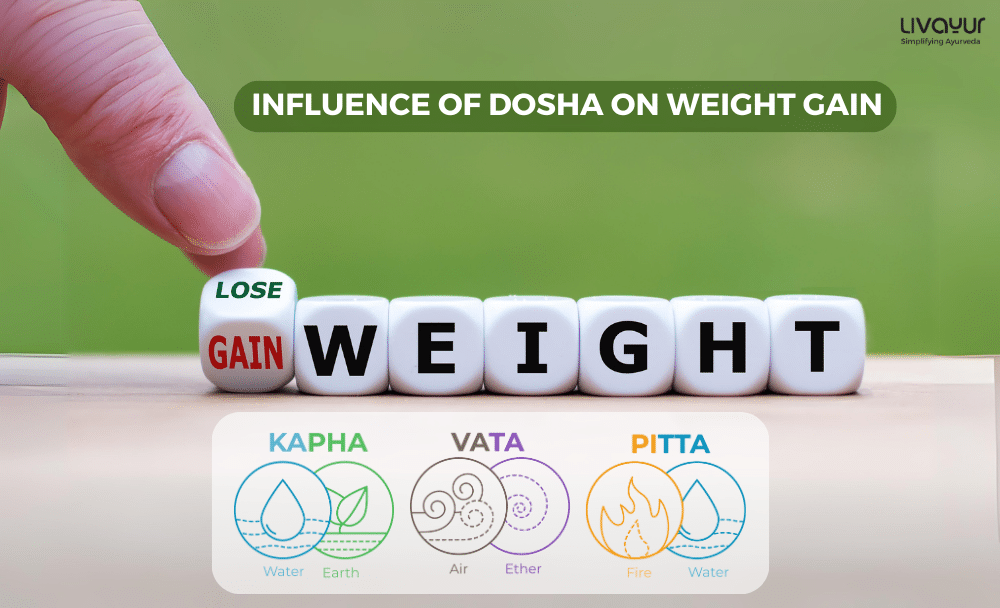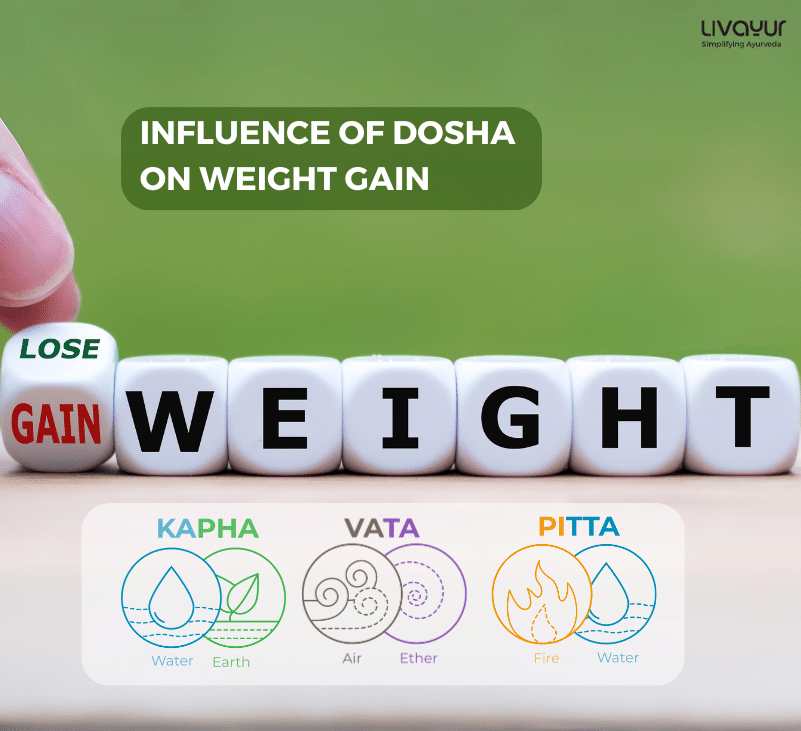
Ayurveda is undoubtedly the oldest medicinal practice in the world; it is the age-old health science with the concept of Tridosha and Prakriti at its core. With the advent of modern science and technology, there is substantial evidence to connect the concepts of Tridosha and Prakriti with metabolic pathways, chronic diseases and various genotypes.
Why weight gain is important?
In today’s world where every individual is confronted with the idea of losing weight, this may sound a little absurb but gaining weight is as important as it is to reduce. Ayurveda takes a whole-body holistic view of good health; it has recommendations for those who are emaciated, underweight or weak. According to Ayurvedic studies, if a person is suffering from such ailments he or she has something wrong with the metabolism.
The concept of Dosha governs the body where the Tridosha’s balance is different for every individual. A healthy lifestyle and a good diet may help in maintaining balance. A good metabolism is governed by Agni or the digestive fire. Agni varies every day in relation to the sun; it is weak at sunrise and sunset but reaches its peak in the noon. So, in order to gain weight one must plan their meals according to the sun’s schedule.
What is Tridosha?
The fundamental theory in Ayurveda to understand the system of health and disease is referred to as Tridosha. As the word Tridosha suggests, Tri (Three in Sanskrit) involves three categories of Doshas; Vata, Pitta and Kapha. This is the central doctrine of Ayurveda which originates from the first chapter retrieved from the earliest recorded texts known to mankind the ‘Charaka Samhita’.
Ayurvedic medicines are based on a concept that suggests that the world is made up of five elements – Aakash (space), Jala (water), Prithvi (earth), Teja (fire) and Vayu (air). A combination of each element results in Tridoshas, Vata, Pitta and Kapha. These Doshas are said to be responsible for a person’s physiological, mental and emotional health.

Types of Doshas
Vata: It is the energy of movement of the body. It consists of two elements that are, air and space. It mainly governs breathing, muscle as well as tissue movement, blinking, the pulse of the heart and all movements of the brain. A balanced Vata is known for promoting creativity and flexibility and an unbalanced Vata produces fear and anxiety.
Pitta: This Dosha of the human body is responsible for digestion or metabolism. The two main elements of Pitta are fire and water. It regulates digestion, absorption, temperature, assimilation, metabolism and nutrition of the body. A balanced Pitta promotes intelligence and understanding whereas an unbalanced, Pitta produces anger, hatred and jealousy.
Kapha: Kapha is the energy of lubrication and structure of the body. It is made up of water and earth and is responsible for governing lubrication of joints and muscles, skin moisture balance, and immunity. A balanced Kapha encourages feelings of love, calmness and forgiveness whereas an unbalance Kapha leads to attachment, greed and envy.
How are Doshas and weight gain related?
According to Ayurveda, Prakriti is the state of a human in its natural or pure form. Ayurveda categorises people on basis of the Prakriti. People are supposed to have fixed Prakriti that is formulated by the condition of Tridosha during the union of sperm and ovum inside the uterus.
The three Doshas mingle to make a balance in the body which is called Prakriti.
Pieces of evidence have connected the Prakriti with the metabolic pathways of one’s body. Balanced Tridosha makes it possible for the body to gain good weight in order to remain healthy. Vata, Pitta, and Kapha have unique metabolic activities, each of their own kind.
The main connection between Doshas and weight gain is metabolism.
Studies have suggested that the Pitta predominance Prakriti type has a high basal metabolic rate and energy consumption which leads to tissue destruction and premature ageing and average life span, while Kapha predominance Prakriti type has delayed manifestation of ageing and longer life span.
Studies have also established a correlation between specific Prakriti types and different metabolic activities in the body.
Doshas prevent conditions of underweight, weakness, weak immunity and increase stamina to fight diseases. Ayurvedic concepts of good health and the digestive process are very closely interlinked.
Conclusion:
Weight gain is equally important as weight loss, the situations in each vary. The lifestyle of an individual is complete if the Prakriti of their body is fixed. Each Dosha has the characteristic of metabolism and each perform to maintain balance and healthy weight.
“Ayurveda teaches us to cherish our innate-nature – to love and honour who we are, not as what people think or tell us, who we should be.” – Prana Gogia
This article is reviewed by Dr. Pawan Kumar Sharma


























1 Comments